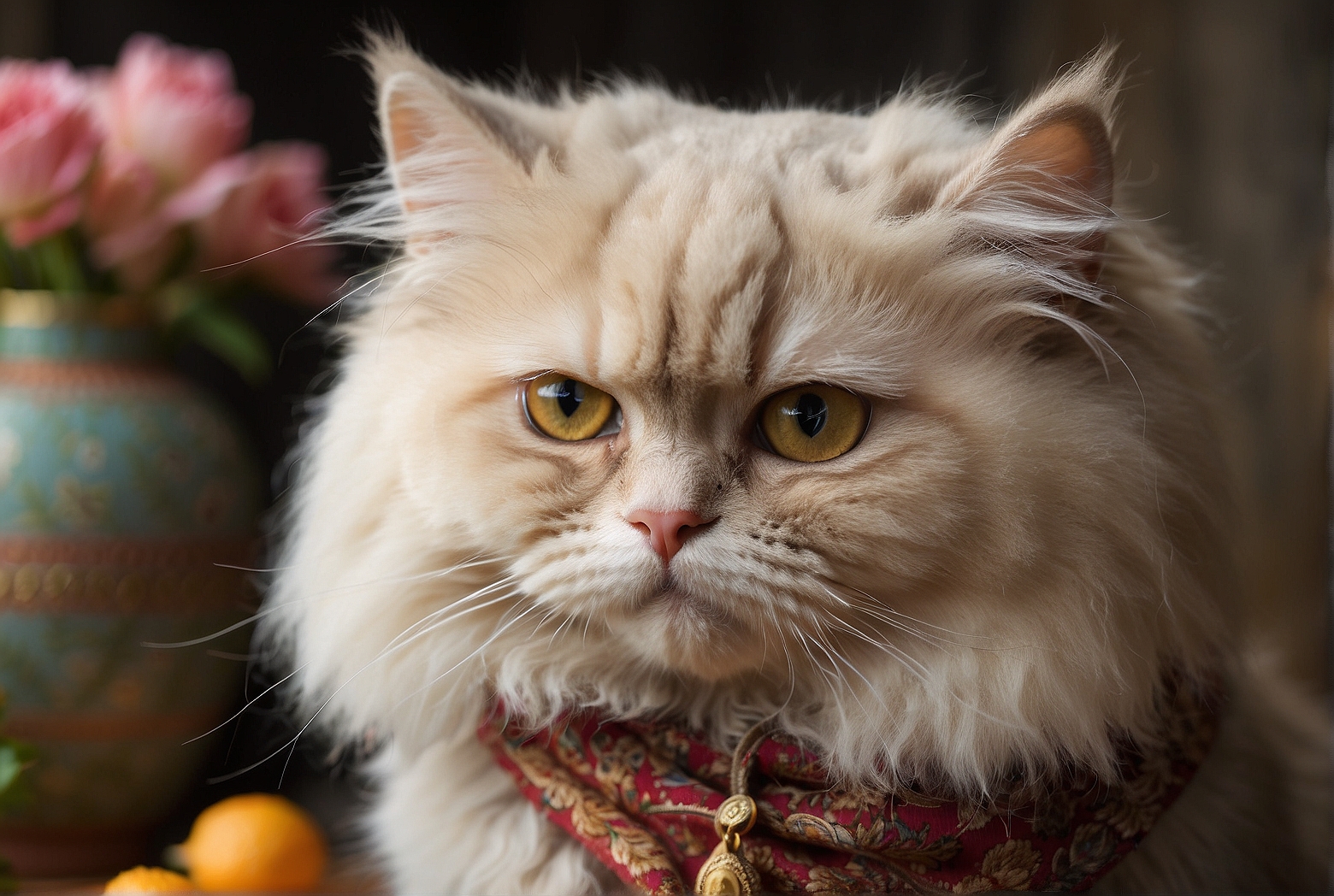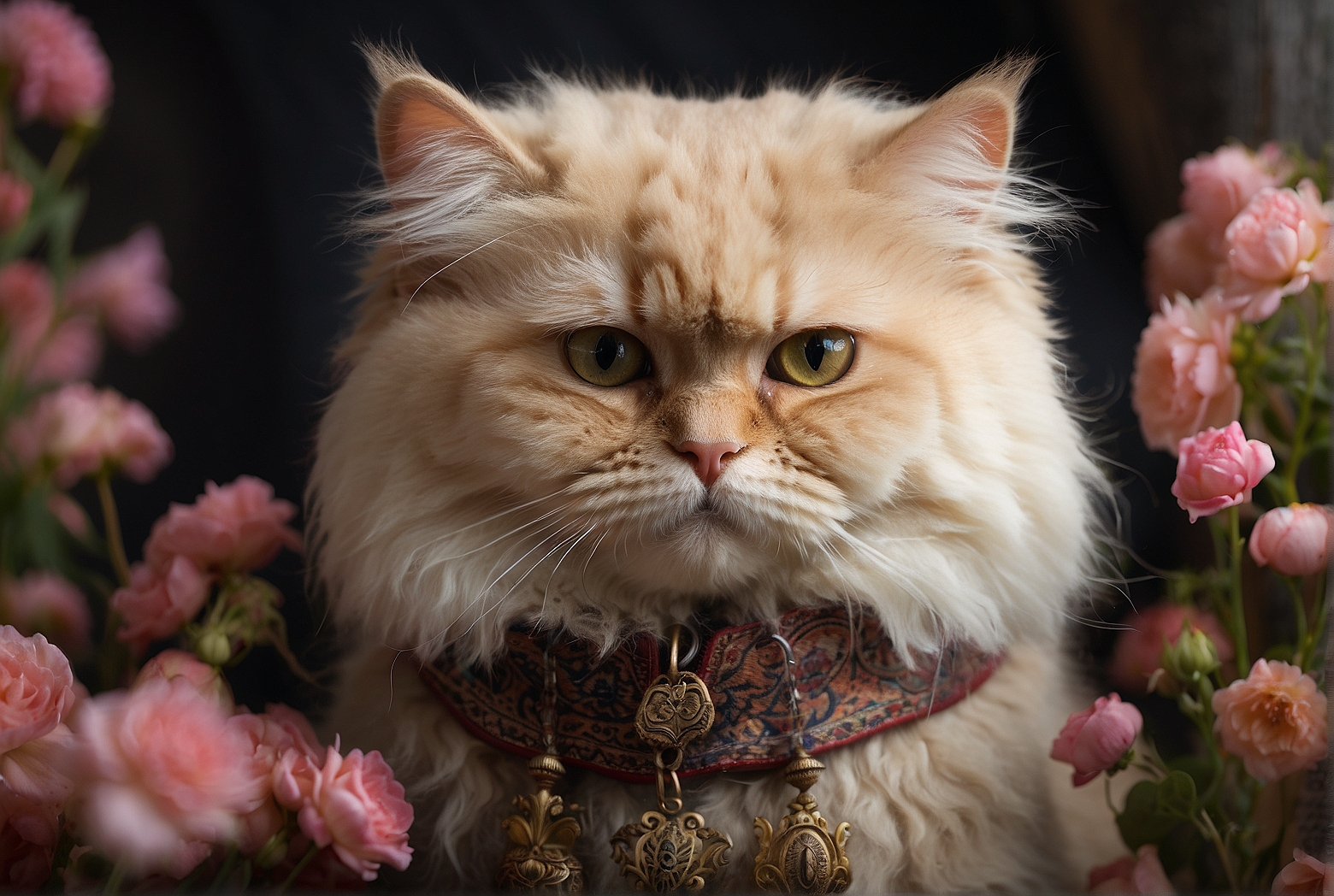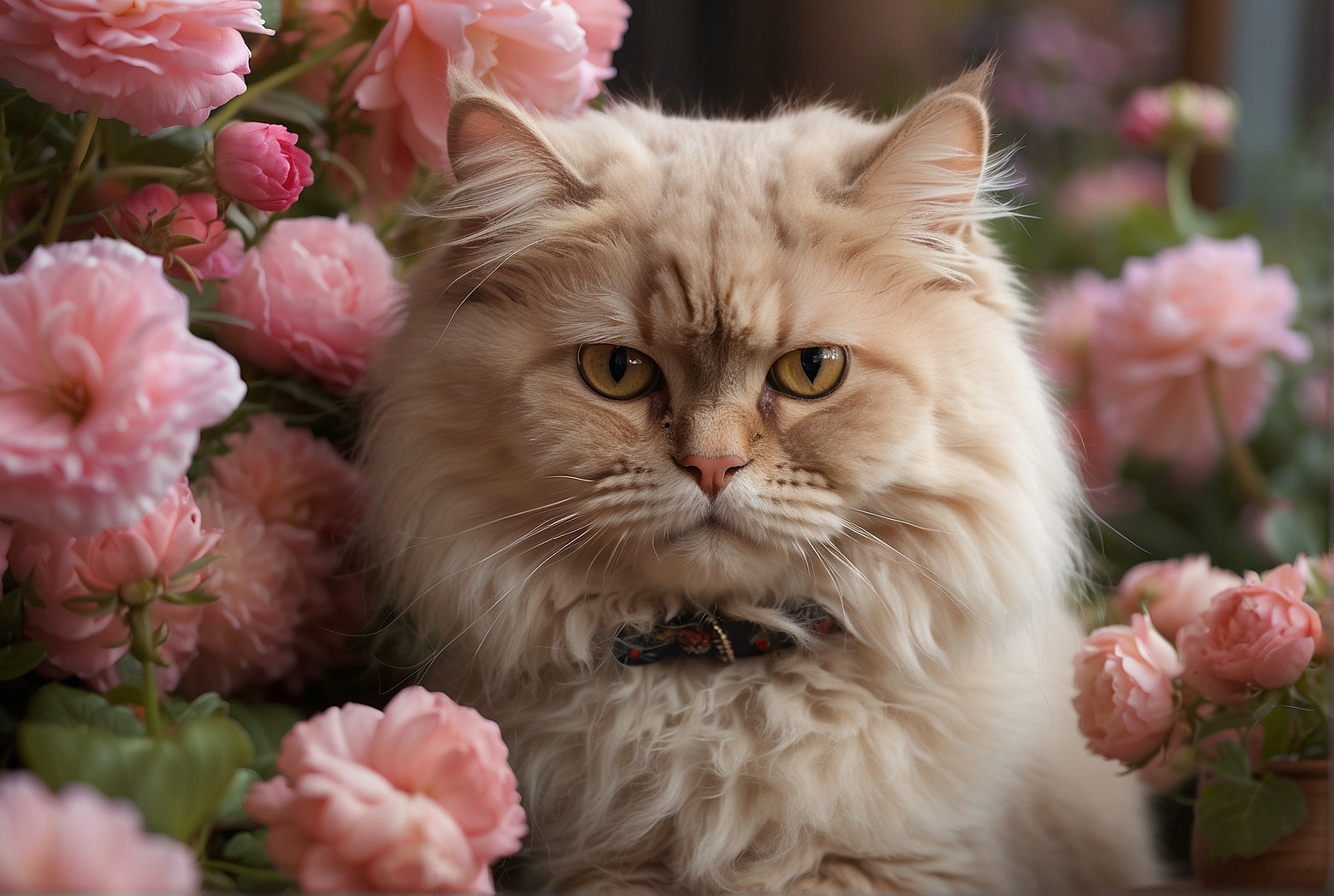Did you know that Persian cats, with their luxurious long fur and strikingly expressive eyes, are often associated with their calm and gentle nature? But have you ever wondered if these majestic felines possess a remarkable sense of smell? In this article, we will explore the olfactory abilities of Persian cats and discover if they are as impressive as their stunning appearance.
Overview of Persian Cats
Physical characteristics
Persian cats are well-known for their distinct appearance. They have long, luxurious coats that come in a variety of colors and patterns. Their eyes are typically large and round, ranging in color from blue, green, copper, to odd-eyed. Persian cats also have a stocky build with a broad chest and short legs. One of their most striking features is their flat, round face with a short, upturned nose.
History and origin
Persian cats have a rich history that dates back several centuries. They are believed to have originated in Persia (modern-day Iran), hence their name. These regal felines were highly revered in ancient Persia and were often kept as cherished pets by royalty and noble families. They eventually made their way to Europe in the 17th century, where they gained popularity among cat enthusiasts. Through meticulous breeding programs, Persian cats have become one of the most recognized and beloved cat breeds worldwide.
Personality traits
Persian cats have a reputation for being calm, gentle, and affectionate companions. They are known for their laid-back and easygoing nature, making them great pets for families or individuals seeking a low-energy pet. These cats enjoy a peaceful and serene environment and are not typically fond of loud noises or sudden changes. Despite their peaceful demeanor, Persian cats can be playful at times, especially with interactive toys or when engaging in gentle play with their human companions.
The Sense of Smell in Cats
Importance of sense of smell
The sense of smell plays a crucial role in a cat’s daily life. For cats, smell is a primary form of communication and helps them navigate their environment. It allows them to detect prey, identify potential dangers, and recognize familiar scents. Additionally, a cat’s sense of smell is closely linked to their appetite, as they rely on scent to locate and assess food sources.
Comparison with other senses
While cats possess other heightened senses such as hearing and vision, their sense of smell surpasses them in some aspects. Cats have a highly developed vomeronasal organ, also known as the Jacobson’s organ, which is responsible for detecting pheromones and other chemical cues in their environment. This organ allows them to gather extensive information from scents that humans may not even notice.

How cats use their sense of smell
Cats rely on their sense of smell to mark their territory. They have scent glands located on various parts of their body, such as the paws and face, which they use to leave their signature scent on objects or surfaces. This behavior helps them establish their presence and communicate with other cats. Additionally, cats use their sense of smell to find their way home, locate their litter box, and identify familiar individuals or animals.
How it differs from human sense of smell
When compared to humans, cats have a superior sense of smell. While humans have approximately five to six million olfactory receptors, cats possess around 200 million. This allows them to detect odors with much greater precision and sensitivity. Cats also have a wider range of smells that they can perceive, including scents that are undetectable to humans.
Understanding Persian Cats’ Sense of Smell
Anatomy of a cat’s nose
A cat’s nose is a complex and intricate structure that aids in their sense of smell. It is composed of two nostrils, or nares, which open up into a spacious nasal cavity. Inside the nasal cavity, there are numerous small and delicate bones covered in specialized scent-detecting cells called olfactory receptors. These receptors are responsible for detecting and transmitting scent signals to the brain.
The olfactory system in Persian cats
Persian cats, like all cats, have a well-developed olfactory system. Their olfactory receptors are highly sensitive and allow them to detect a wide range of scents. The scent molecules in the air are inhaled by the cat through their nostrils and come into contact with the olfactory receptors, triggering a response in the brain that helps them interpret the scent.
How their sense of smell compares to other cats
Persian cats have a sense of smell that is comparable to other cat breeds. However, due to their unique facial structure, they may experience some differences in their sense of smell. The flat face of Persian cats can result in a shorter nasal cavity, which may affect the airflow and subsequently impact their ability to detect certain smells. Nonetheless, their olfactory capabilities are still highly developed and functional.
Factors affecting their sense of smell
Various factors can affect a Persian cat’s sense of smell. These can include genetics, overall health and well-being, and external factors such as environmental pollutants or nasal congestion. It’s important to monitor any changes in a Persian cat’s sense of smell and consult a veterinarian if there are any concerns.

Smell Sensitivity in Persian Cats
The number of smell receptors
Persian cats, like all cats, have a remarkable number of smell receptors. The average cat has around 200 million olfactory receptors, which enable them to detect odors with great sensitivity and accuracy. This abundance of receptors allows Persian cats to perceive scents that are imperceptible to humans.
How sensitive are Persian cats’ noses
Persian cats have highly sensitive noses, thanks to their extensive olfactory receptors. They can pick up on subtle changes in scent concentrations and differentiate between various smells. This heightened sensitivity contributes to their ability to navigate and interpret the world around them through smell.
Ability to distinguish different scents
Persian cats have the ability to distinguish between different types of scents. Whether it’s the smell of their favorite food, the scent of a familiar person, or the presence of another animal, Persian cats can differentiate and identify a wide range of smells. Their acute sense of smell allows them to form rich associations with scents and react accordingly.
Smell-Related Behavior in Persian Cats
Marking territories with scents
Like all cats, Persian cats engage in scent marking to establish and maintain their territories. They possess scent glands located on their paws, face, and other parts of their bodies, which they use to leave their scent on various objects or surfaces. By marking their territory, Persian cats communicate their presence to other cats, deterring potential intruders, and asserting their ownership.
Scent-based communication
Scent is an essential method of communication for Persian cats. By leaving their scent on objects and marking their territories, they convey messages to other cats regarding their presence, hierarchy, and availability for mating. Persian cats also use scent to recognize familiar individuals, both feline and human, and to communicate social cues and emotions.
Detecting prey and food
The sense of smell is crucial for Persian cats when it comes to finding and detecting prey or food sources. Their keen sense of smell helps them track down small rodents or insects, even in hard-to-reach places. Persian cats rely on scent cues to locate their food bowls and may refuse to eat if the smell doesn’t match their preferences.
Reaction to certain odors or smells
Persian cats, like other cats, can have varying reactions to different odors or smells. Some scents may pique their interest and curiosity, while others might repel them. Certain strong or unpleasant smells may elicit avoidance behaviors, such as sneezing or moving away from the source of the scent. It’s important to note that individual cats may have different sensitivities and preferences when it comes to smells.
Training Persian Cats Using Scents
Using positive reinforcement techniques
Training Persian cats using scents can be an effective way to engage their natural olfactory abilities. Positive reinforcement techniques, such as treats or praise, can be used to reward desired behaviors when the cat responds to a particular scent cue. This type of training can be an enjoyable and mentally stimulating experience for both the cat and their owner.
Associating scents with desired behaviors
To train a Persian cat using scents, it’s important to associate specific scents with desired behaviors. For example, if you want your cat to come when called, you can use a particular scent as a cue and reward them when they respond. Over time, the cat will associate the scent with the behavior and learn to respond accordingly.
Examples of scent-based training
Scent-based training can encompass a wide range of activities. For instance, you can teach your Persian cat to find hidden treats or toys by using scent trails or scent markers. You can also introduce them to different scent cues for basic commands, such as sit or stay. The possibilities are endless, and with patience and consistency, your Persian cat can excel in scent-based training.
Health Issues and Smell in Persian Cats
Potential nasal and respiratory problems
Persian cats are known to have a flattened facial structure, which can sometimes lead to nasal and respiratory issues. The compressed nasal passages can cause difficulty in breathing and may affect their sense of smell. It’s important to monitor the nasal health of Persian cats and consult with a veterinarian if there are any symptoms of respiratory distress or persistent nasal congestion.
Effects of certain smells on their health
Strong or toxic smells can have adverse effects on the health of Persian cats, just like any other breed. Some chemicals or substances commonly found in households, such as cleaning products or certain plants, can be harmful when inhaled by cats. It’s essential to create a safe and odor-free environment for your Persian cat to minimize any potential health risks.
Signs of smell-related health issues
If a Persian cat is experiencing smell-related health issues, certain signs may indicate a problem. These can include persistent sneezing, nasal discharge, loss of appetite, lethargy, or changes in behavior. If you notice any of these symptoms, it’s important to seek veterinary care promptly to address any underlying health concerns.
Improving the Smell Experience of Persian Cats
Maintaining a clean environment
Persian cats are known to be sensitive to their surroundings, including smells. To ensure a positive smell experience for your Persian cat, it’s essential to maintain a clean and odor-free environment. Regularly clean litter boxes, wash bedding, and remove any potential sources of unpleasant odors to promote a comfortable and enjoyable living space for your feline companion.
Proper grooming for scent-related benefits
Regular grooming is vital for Persian cats, not only for their physical appearance but also for their smell-related benefits. Their long coats can trap odors and become unpleasant if not regularly groomed. Brushing their fur helps remove dirt, debris, and any lingering odors, leaving them with a fresh and pleasant scent.
Providing stimulating scent-related activities
To engage their sense of smell and provide mental stimulation, provide your Persian cat with scent-related activities. This can include puzzle toys that require them to use their nose to find hidden treats or incorporating scented toys into their playtime. These activities help keep their olfactory senses sharp and provide an enriching and entertaining experience.
Common Myths and Misconceptions
Persian cats lack a sense of smell
Contrary to popular belief, Persian cats do not lack a sense of smell. While their flat facial structure may have certain anatomical considerations, their sense of smell is fully intact and functional. Persian cats possess the same olfactory capabilities as other cats, although individual variation may exist.
Only specific cat breeds have a strong sense of smell
While it is true that certain cat breeds, such as the Maine Coon or the Siamese, have been reported to have exceptional olfactory abilities, it is important to note that all cats possess a highly developed sense of smell. The extent to which a particular cat breed relies on its sense of smell may vary depending on their natural instincts and individual preferences.
Smell-related behaviors are purely instinctual
While many smell-related behaviors in cats are rooted in instinct, it is important to recognize that a cat’s sense of smell can also be influenced and shaped by their environment and experiences. Training and positive reinforcement can play a significant role in harnessing a Persian cat’s olfactory abilities and using them in a controlled and beneficial manner.
Conclusion
In conclusion, Persian cats have a well-developed and highly sensitive sense of smell. Their olfactory receptors allow them to navigate their environment, communicate with other cats, and detect prey or food sources. Understanding and appreciating a Persian cat’s sense of smell can help create a more enriching and fulfilling experience for both the cat and their owner. By providing a clean and stimulating environment, utilizing scent-based training techniques, and ensuring their overall health and well-being, Persian cats can fully embrace and utilize their olfactory abilities to enhance their lives.
